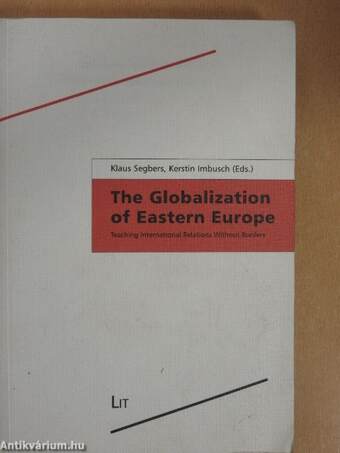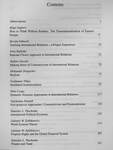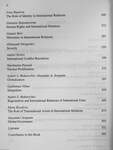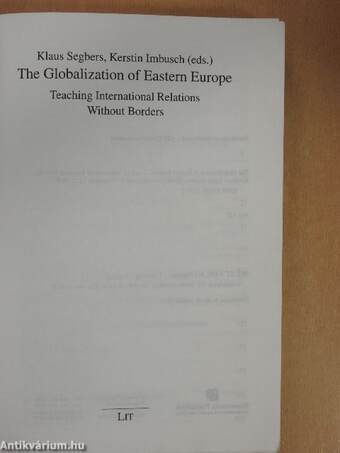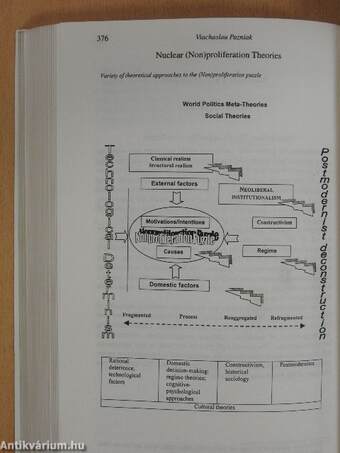1.117.562
kiadvánnyal nyújtjuk Magyarország legnagyobb antikvár könyv-kínálatát
The Globalization of Eastern Europe
Teaching International Relations Without Borders
| Kiadó: | Lit Verlag |
|---|---|
| Kiadás helye: | Münster |
| Kiadás éve: | |
| Kötés típusa: | Ragasztott papírkötés |
| Oldalszám: | 587 oldal |
| Sorozatcím: | |
| Kötetszám: | |
| Nyelv: | Angol |
| Méret: | 24 cm x 16 cm |
| ISBN: | 3-8258-4729-2 |
| Megjegyzés: | További szerzők a kötetben. Néhány fekete-fehér ábrával. |
naponta értesítjük a beérkező friss
kiadványokról
naponta értesítjük a beérkező friss
kiadványokról
Fülszöveg
Globalization and fragmentation, weakly controlled flows of information
and knowledge, increasing cleavages in societies undergoing rapid change,
flows of migrants, services and capital, bypassing the control of national
governments, life styles and consumption patterns produced by electronic
media and advertising - all these developments already have a significant
impact on post-Soviet regions. And all kind of actors - decision makers,
journalists, experts, students - perceive the environment beyond their
respective national borders increasingly as the „playground" they have to
take into account, and as a framework for action.
The chapters in this volume have been written by experts in the so called
transformation countries in Eastern Europe. They address various questions
on inter- and transnational relations, thereby offering a framework for
reflection and for analysis of macro-trends around policy fields relevant for
the countries in Central and Eastern Europe.... Tovább
Fülszöveg
Globalization and fragmentation, weakly controlled flows of information
and knowledge, increasing cleavages in societies undergoing rapid change,
flows of migrants, services and capital, bypassing the control of national
governments, life styles and consumption patterns produced by electronic
media and advertising - all these developments already have a significant
impact on post-Soviet regions. And all kind of actors - decision makers,
journalists, experts, students - perceive the environment beyond their
respective national borders increasingly as the „playground" they have to
take into account, and as a framework for action.
The chapters in this volume have been written by experts in the so called
transformation countries in Eastern Europe. They address various questions
on inter- and transnational relations, thereby offering a framework for
reflection and for analysis of macro-trends around policy fields relevant for
the countries in Central and Eastern Europe. The product certainly mirrows
the specific environment of researchers, teachers and students in these
countries. At the same time, it reflects a process of intensive discussion on
the state of IR literature worldwide. Furthermore, this book demonstrates
how useful teaching tools for universities and institutes not only in Eastern
and Central Europe can be created.
/ Vissza
Témakörök
- Közgazdaságtan > Gazdaságpolitika
- Közgazdaságtan > Közgazdasági elméletek > Egyéb
- Idegennyelv > Idegennyelvű könyvek > Angol > Közgazdaságtan > Gazdaságpolitika
- Idegennyelv > Idegennyelvű könyvek > Angol > Történelem > Európa története > Egyéb
- Jogtudomány > Jogi ismeretek > Nemzetközi jog
- Idegennyelv > Idegennyelvű könyvek > Angol > Közgazdaságtan > Közgazdasági elméletek > Egyéb
- Történelem > Idegennyelvű > Angol
- Történelem > Politika > Külpolitika > Diplomácia
- Idegennyelv > Idegennyelvű könyvek > Angol > Jogtudomány > Egyéb
- Történelem > Kontinensek szerint > Európa, európai országok története > Kelet-Európa > Egyéb
- Történelem > Legújabb kor > Globalizálódó világ
- Történelem > Tanulmányok
- Jogtudomány > Tanulmányok, értekezések, tankönyvek


